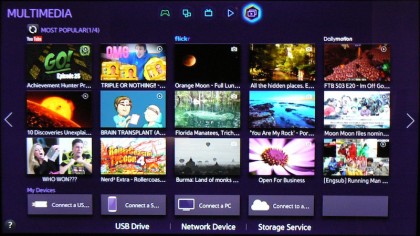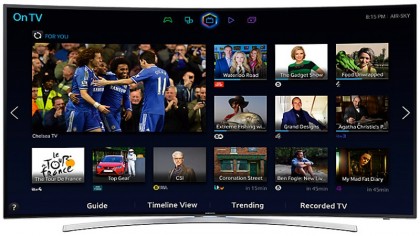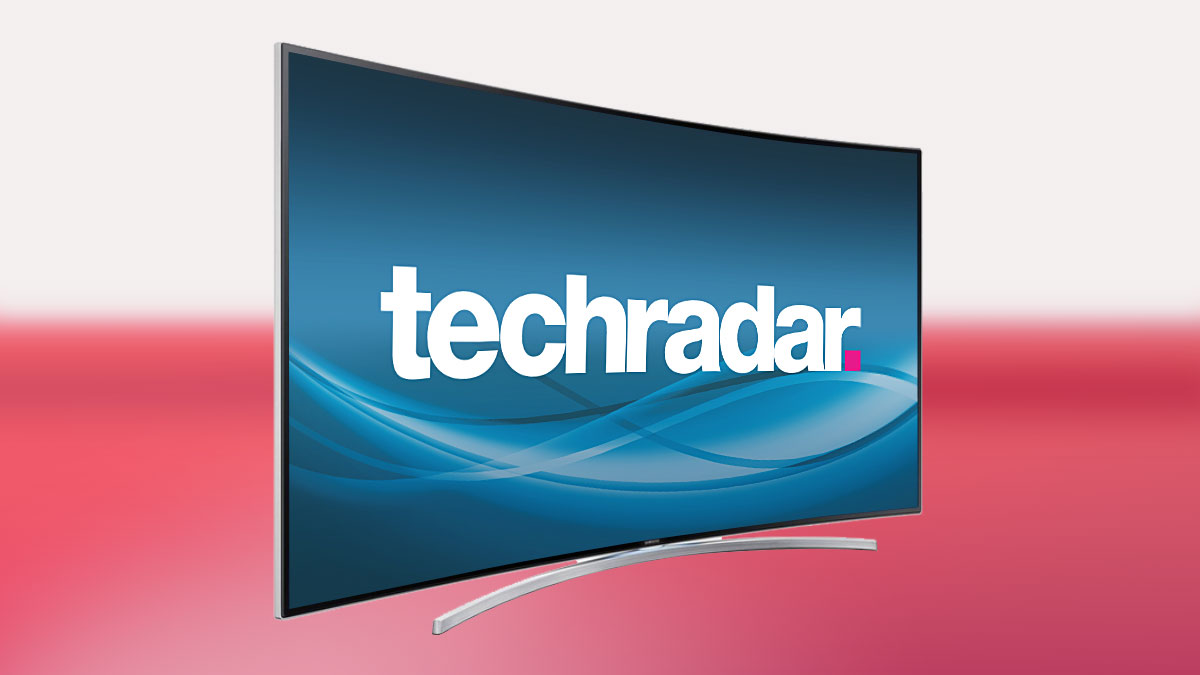Why you can trust TechRadar
While the UE55H8000 understandably doesn't hit the extraordinary picture heights of the UE65HU8500, it's quickly apparent that it's still a seriously excellent TV. It's as good a performer as the HD world has delivered to date in many ways.
The star of the show is its impeccable black level response. Dark scenes look exceptionally natural and involving thanks to the TV's ability to produce a black colour that actually looks black, rather than some shade of grey like we still see on other LCD TVs.

So long as you reduce the set's backlight to around its 7-9 level you can enjoy black levels from the UE55H8000 that can be considered state of the art by LCD TV standards. It's an achievement made all the more impressive by the fact that the UE55H8000 doesn't employ a full local dimming system.
Backlight consistency
It's great to see, too, that the gorgeous black level response is consistent from corner to corner, displaying no problems with backlight clouding. This is a real relief given that we'd had concerns over what problems the UE55H8000's curve might present to an edge LED lighting system.
It's impressive to see that the deep black colours are delivered on the UE55H8000 without sacrificing much brightness from dark images. A fact that means precious little shadow detail gets squeezed out of the picture.
This shows that the panel's native contrast performance is very strong, as the black level response isn't purely a function of the TV's dynamic contrast light manipulation circuit. It also makes sure that, unusually for LCD technology, dark scenes contain as much of a sense of depth as bright ones.
Colour prowess
I usually find that good black levels lead to lots of other good picture traits too, and that's even more obvious on the UE55H8000. Colours, for starters, are excellent. Saturations are rich and bold but – so long as you avoid the dynamic preset – they never tip over into unrealistic, cartoonish territory.
There's also plenty of finesse in the set's handling of colour blends, which enhances the sense of solidity of objects in the image and removes all trace of the colour blocking and striping artefacts that can leave lesser HD images looking rough and ready.
Admittedly I did feel acutely aware of the step down in colour resolution and range from the UE65HU8500 caused by the UE55H8000's lack of PurColour technology. But it's not really fair to compare too closely TVs separated in price by £1800. By high-end HD TV market standards, the UE55H8000's colour handling is outstanding.
Sharpness
When using the set's out of the box settings the sharpness is a bit too exaggerated, to the point where grain starts to look overstated and edges start to look over-stressed. Reduce the TV's sharpness setting by around 10-15 steps, though, and you still get a very detailed image (albeit not one that gets even close to the resolution of a UHD image) but one that looks much more natural and 'polished'.
What about the curve? Does that bring anything to the picture quality table? Maybe. If you sit reasonably close to the TV and as near its centre as you can, then yes, the image does seem both deeper and more immersive thanks to the way the image seems to wrap ever so slightly around your peripheral vision.
It's worth saying, too, that the curve doesn't limit viewing angles as much as you might have expected. In fact, the curve actually helps with off-axis viewing to some extent, as it prevents the usual reduction in contrast and colour you get with flat LCD TVs.
Viewing angles issues
However, if you get beyond around 35 degrees off axis with your viewing angle the image does start to look uncomfortable thanks to the way the nearside of the picture looks narrower than the far side. Crucially the area of living room acceptable to sit in to avoid this effect is smaller than it was on the UE65HU8500, due simply to the HD model's smaller screen size.
The smaller screen size also means you need to sit closer to get the immersive benefits of the curve than you do with the larger 65-inch set. All of which underlines my long-held belief that the usefulness of a curved TV screen increases as screen sizes increase, making its appearance on a relatively small 55-inch TV of debatable merit.

One other point I should make about the curve is that it can distort reflections in your room so that they stretch across more of the screen than they would with a flat panel. So try and watch in dark conditions and make sure you don't have a wall-mounted light source directly opposite the screen.
We've got two more picture areas to cover off: motion and 3D. Regarding the former, the UE55H8000 does a good job – a better job by far, in fact, than previous Samsung TV generations have. This is because, presumably, its new Quad Core Plus processing engine's extra horsepower is able to deliver better/cleaner results on the fly.
3D Motion
This improved motion processing is particularly helpful with 3D. You can use it on its lowest power setting to reduce the judder issue Samsung TVs commonly suffer with when showing 3D.
In other respects the UE55H8000's 3D pictures are excellent. Detail levels are extremely high, providing a potent reminder of why the full HD active 3D format was created. In fact, Samsung's 3D preset pushes sharpness too hard, leaving details looking unnaturally over-wrought. But a moment's work reducing the sharpness setting is all that's required to correct this.
The sense of depth in the UE55H8000's 3D images is outstanding too. This is partly thanks to the image's sharpness and the remarkable brightness of 3D images, despite the dimming effect of the active shutter glasses (two of which you get free with the TV). It's also because of the set's superb contrast performance, which makes it easier – even during dark scenes - for your eye to pick out the key depth markers that help delineate a sense of 3D space.
The curved screen slightly enhances the sense of depth in the image too, though this is a pretty marginal point.
The rather over-aggressive nature of Samsung's 3D preset means that, as well as the over-egged sharpness, there's a little backlight clouding until you reduce the backlight level.
There's also some slight crosstalk ghosting noise over distant objects that you can't completely eradicate via the TV's settings. But while we certainly wish active 3D LCD panels had figured out a way to eradicate crosstalk by now, its appearance on the UE55H8000 is in truth quite subdued, and so doesn't stop you enjoying 3D overall.
John has been writing about home entertainment technology for more than two decades - an especially impressive feat considering he still claims to only be 35 years old (yeah, right). In that time he’s reviewed hundreds if not thousands of TVs, projectors and speakers, and spent frankly far too long sitting by himself in a dark room.

